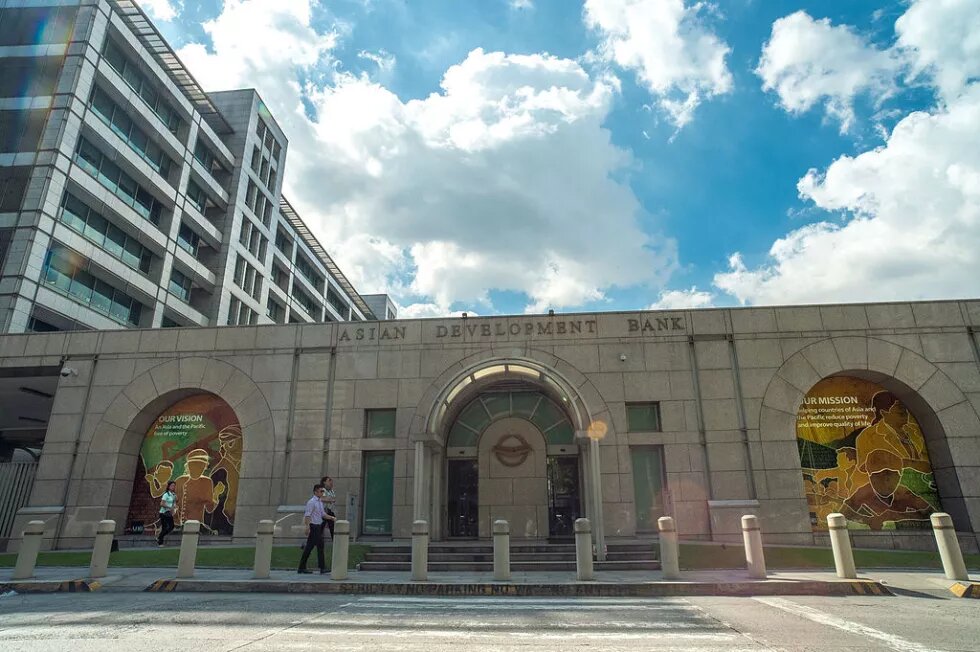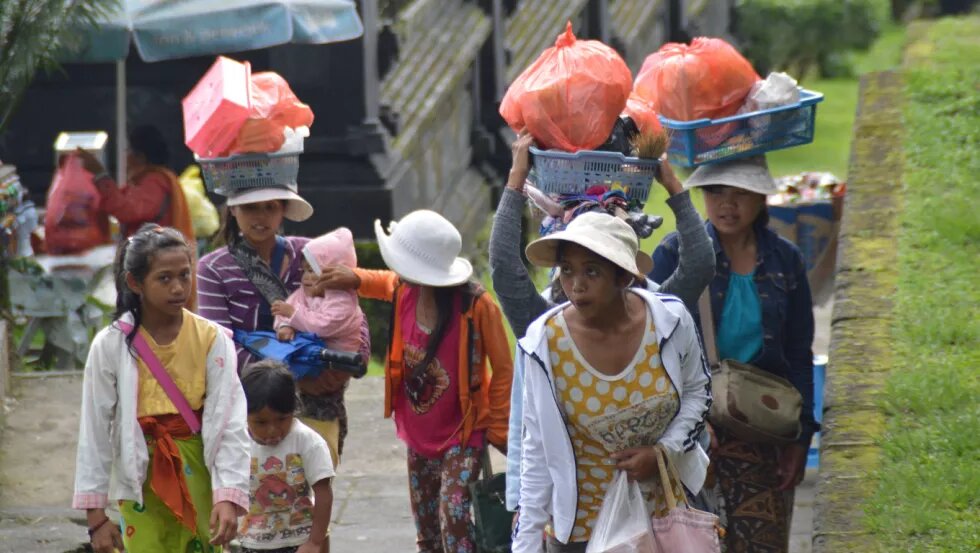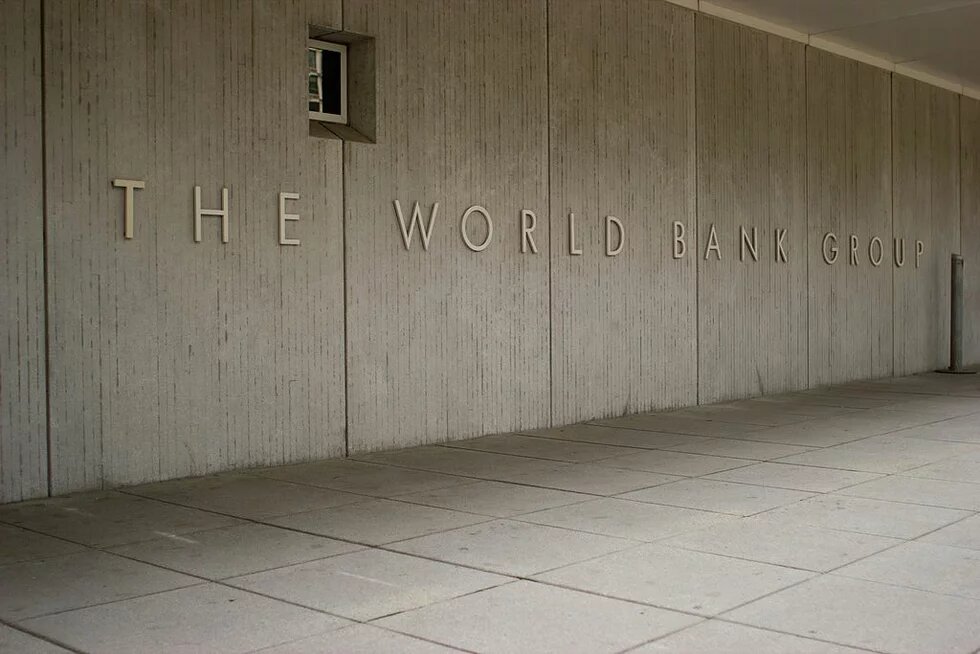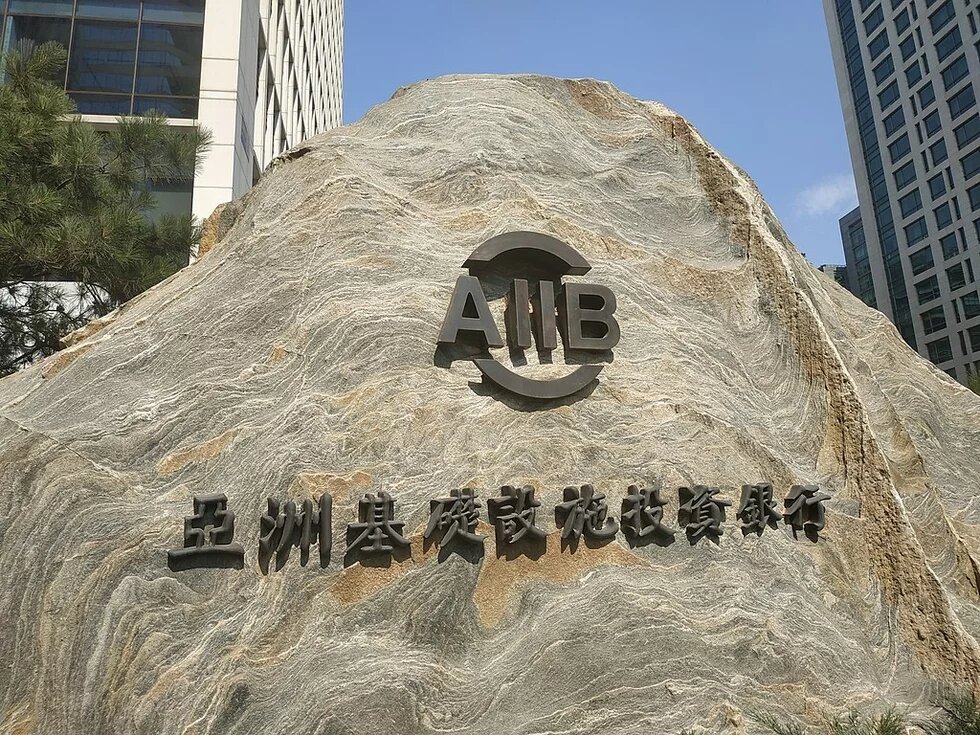
Women bear the brunt of COVID-19 pandemic. Their household chores are added with helping the kids with math and other school homework and force themselves to be familiar with computers or laptops and other gadgets; their multiple burden at home and psychological stress increased.

The Indonesian National Commission on Violence against Women (Komnas Perempuan) reported an increase of domestic and sexual violence during the pandemic.[1] The United Nations Population Fund (UNFPA) in a statement from July 2020 estimated that 47 million women in low- and middle-income countries going without contraceptives, leading to an additional 7 million unintended pregnancies. The number of maternal deaths is also expected to increase[2]. The International Labor Organization (ILO) estimated in June 2020 that 55 million domestic workers, of which more than half were female, impacted by COVID-19 in forms of loss of jobs or working hours and remuneration, as well as their prior access to social security.[3] Moreover, pandemic is also used for suppressing human and women’s rights defenders as reported by some Indonesian NGOs: forced evacuating activists from their offices and COVID-19 testing, fake testing order and black mailed hungry communities with recovery food supplies and a warning not to raise voices against companies anymore. Thus, in the developing countries the pandemic came not into an empty and peaceful space, where everything was okay before, but into an arena where women are oppressed by the intertwined of forces of patriarchy, globalization, militarization, and fundamentalism. The pandemic clearly worsened the women’s condition.
To come out from the economic crisis governments are looking for financial supports from the IFIs. The Indonesian government is looking to borrow a total of US$7 billion from multilateral organizations including the ADB, AIIB, World Bank and Japan International Cooperation Agency (JICA)[4] for covering budget deficit of 6.34 percent due to financing US$49.3 billion for to finance healthcare response and prevent a greater economic meltdown. A recovery bond is planned to help the business world in Indonesia. The Philippines government stated in June to seek US$ 85.89 billion for reviving its economy hit badly by the pandemic. The ARISE program (Accelerated Recovery and Investments Stimulus for the Economy) backed by 44 country’s biggest business groups was approved by the Philippines lawmakers on June 4, 2020[5]. ADB claimed to provide USD 11.2 billion in grants, technical assistance, loans, and private sector assistance. World Bank announced the targets of USD 160 of mobilization by the end of year 2021. The AIIB created a Crisis Recovery Facility with up to USD 13 billion of financing to both public and private sector entities. Those recovery packages are mostly addressed for the economic side of the problems triggered by the pandemic. Moreover, policy procedures are loosened to smoothly release the finance, including procurement policy, increase the limit of faster approach transaction with small private sector from USD 100 million to USD 400 million, increasing the limit of trade finance program from environment risk Category C to Category B[6].
The massive influx of finance from those IFIs, raise also questions whether those recovery measures would help transform the economic and social systems in the developing world that the pandemic showed as incapable and very vulnerable to crisis? Would they address the existing root problems of poverty, privatization of health and water, food insecurity, land and resource loss, which were worsen during the pandemic? Or, in the contrary, it would only add another burden to people and particularly for women since those financial supports mainly address to the economic sector that is dominated by private actors? How is the application of safeguards for those finance? Many questions that the answers need thorough readings of those measures.
This time, it is about gender. Is there any sufficient capacity of the ADB, World Bank and AIIB to protect women from potential harms of their financial operations in general, and also due to their pandemic recovery measures? As institutions claimed themselves as concerning with gender equality, we would assume that gender and women’s issues are in the center of its development efforts as shown on the website of ADB, World Bank and AIIB: many women’s and children faces.
Gender and the IFIs
The United Nations’ Fourth World Conference on Women’s in 1995 in Beijing adopted the Beijing Platform for Action that contains among others a gender mainstreaming approach to achieve gender equality. The definition of gender mainstreaming then was agreed in 1997 by the conclusions of ECOSOC as: “The process of assessing the implications for women and men of any planned action, including legislation, policies or programmes, in all areas and at all levels. It is a strategy for making women’s as well as men’s concerns and experiences an integral dimension of the design, implementation, monitoring and evaluation of policies and programmes in all political, economic and societal spheres so that women and men benefit equally and inequality is not perpetuated. The ultimate goal is to achieve gender equality.” (at: https://www.unwomen.org/en/how-we-work/un-system-coordination/gender-mainstreaming ).
The Asian Development Bank and the World Bank adopted this approach as key strategies for their operations. AIIB doesn’t have any gender policy, but some news from events on AIIB’s website showed discussions on gender equality interventions in infrastructure. However, the first line of ‘assessing the implication for women and men in any planned action, including legislation, policies or programmes’ in that aforementioned definition somehow lost its meaning in the gender policies of ADB and World Bank. What stays and promotes is gender mainstreaming as a key strategy to achieve gender equality; meanwhile measures for addressing implications are left out.
Gender mainstreaming into ADB operations as a strategy to achieve equality
ADB released its Gender and Development (GAD) Policy of 2006 to replace its Women in Development Policy (WID) that was operationalized from 1985 to 1996. GAD is a gender mainstreaming strategy to promote gender equity into all ADB activities, including macroeconomic and sector work, lending and technical assistance operations. 5 focus areas of GAD are (1) assistance to developing country members to improve the status of women; (2) facilitate gender analysis of all proposed projects and ensure gender issues are considered in all stages of the project cycle; (3) promote GAD awareness within ADB in-house capacity building and staff’s guideline to implement GAD; (4) assists its developing members in implementing commitments made at the Beijing World Conference on Women; and
(5) explore opportunities to directly address some of the new and emerging issues for women in the region[7]. 12 sectoral gender checklists were developed to guide the staff, partners and consultants on how to integrate gender equality and women’s empowerment objectives, including for sectors of Agriculture and Natural Resources; Education; Energy; Health; and Urban Development and Housing[8].
A loan project will do a gender assessment, as mentioned under point (2) of GAD focus above, and prepare a Gender Action Plan (GAP) for increasing women’s participation in the project activities and providing equitable access to project and program resources including skills training[9]. However, not all projects will be analyzed and a GAP developed for them. ADB set up four gender mainstreaming categories that determine which project preparation needs gender mainstreaming. If a project is determined as having outcomes that directly address gender equality and/or women’s empowerment, then it is categorized as Category I: gender equity that requires gender analysis, GAP and inclusion of GAP into ADB Board’s documents for project approval. But, there is also a project that can be determined as having no gender element, dubbed as Category IV. This Category I of no gender element if the project in preparation does not include any gender design features[10]. Example of the latter one includes projects that are not targeted to women or not provided access, capacity building, physical infrastructure, etc. for women.
Gender is also included in the Initial Poverty and Social Analysis (IPSA) of ADB project preparation. The IPSA gender assessment looks whether the project (1) has the potential to correct gender disparities, (2) has the potential to significantly mainstream gender equity concerns, or (3) is likely to have an adverse impact on gender equality or women’s or girls’ empowerment[11].
Despite the existing GAD and GAP, women still suffer from ADB operations. For example, ADB’s Compliance Review Panel in 2014 identified that the ADB funded Cambodia Rehabilitation Railway Project had displaced over 4000 families. They “… suffered loss of property, livelihoods, and incomes, and as a result have borne a disproportionate cost and burden of development efforts funded by ADB.” In another case of ADB funded the Southwest Area Integrated Water Resource Planning and Management Project in Bangladesh. The Gender Action Plan was made but consequently it was never implemented. According to local CSOs, there were flaws in the implementation especially the training for women and their participation in the decision making process. GAD and GAP fails to protect women from impacts of ADB operations.
After 14 years, the GAD is still not reviewed, but went through an evaluation for the period of 2005-2015 by ADB’s Independent Evaluation Department (IED), which report was published in May 2017. The Gender Action Plan was evaluated in 2007.
Mainstreaming protection of women into ADB operations
GAD and its operational procedures are insufficient to meet requirements of other operational policy of ADB, which is the safeguards. Safeguard policy is defined as a commitment to protect peoples and environment from potential ADB’s operations. The notion of ‘protection for women from harms’ is clearly different from the notion of ‘strategies for gender equality’; both terms applied together is important to achieve gender equality though. Protection is a precautionary approach, meanwhile providing access is a service.
The application of GAD and its operational procedures is not developed for precautionary measures. Gender assessment of GAD and the sectoral check lists are more to identify possibility of women’s access to project and other facilities/services related to the project. The GAP is limited by its own categorization, and not equipped to identify invisible gender issues. Therefore, during ADB safeguards review, which process was around 5 years (2004-2009), CSOs pushed strongly for gender languages.
The main challenge in the attempt to incorporate gender considerations during the Safeguard Policy Update (2004-2009) was reflected in a repeating question from ADB: “… why (the) need (for) gender considerations in the SPS… (when) there is already the ADB Gender and Development Policy that takes care of gender issues…?” This kind of question shows the lack of understanding on the difference between a protection approach and a strategy. This line of questioning actually ignored the fact that the ADB Policy on Gender and Development is considered a strategy, and is therefore not a requirement for borrowers in the same way that the safeguard policy is. The mainstreaming of gender considerations aims to address gender disparities; however, there is no aim to protect women from ADB project impacts and risks. This lack of protection of women would lead to an increase in gender disparities and would contradict the aim of the Gender and Development Policy itself.
The current ADB Safeguard Policy Statement (SPS) 2009 sets an example for other IFIs in regard to explicitly requiring gender-sensitive and responsive application of the safeguard policies. This is a result of intensive interventions in the whole process of the Safeguard Policy Update (SPU) (2008-2010) by members of the NGO Forum on ADB and its partner organizations.
ADB new Safeguard Policy Statement (SPS) of 2009 contains strong gender languages in its policy principles and the project requirements. The SPS requires gender impacts and risk assessment at its environmental, social and economic impacts, specific measures to involve women in consultations, gender sensitive and responsive project grievance redress mechanism. Unfortunately, this strong gender language stays as an aspiration in the realities of project preparation and implementation because the guide for its operationalization is weak. The Operations Manual of the new SPS, which represents the implementing guidelines for the staff, hardly mention gender at all except in a footnote[12].
CSOs already questioned the Operation Manual of SPS when it was released at the same time with the SPS in 2009. The response given was, the GAP is sufficient for the project proposal. Of course this was misleading response —be it for the ADB staff and consultants who work on projects as well as the public. GAP of GAD is a strategy for achieving gender equality based on a gender mainstreaming framework; meanwhile, gender in the context of safeguards is an effort to protect women from harms from the project operation. Hence, those two gender policies have different nature. How gender equality will be achieved if women and their families are already displaced forcedly and their living environment are polluted and destroyed?
The Operations Manual of the new SPS is inconsistent with the SPS itself because it does not provide procedures for the implementation of policy principles and does not require gender considerations. The objective of GAD is to assist member countries to reduce poverty and enhance economic growth, human well-being, and development effectiveness by addressing the gender disparities and inequalities that are barriers to development, and by assisting member countries in formulating and implementing their gender and development goals. Hence, not only does the OM reduce the new SPS into a gender display window, but the absence of procedural guidelines will likewise lead to the neglect of gender issues and the protection of women from adverse project impacts and risks.
When ADB’s Independent Evaluation Department (IED) announced in 2014 to make an evaluation of parts of the SPS, NGO Forum on ADB[13] also raised a request in several meetings with them to include gender in the evaluation. Report of the evaluation of SPS on its Financial Intermediaries and Country Safeguards System showed that that request to included gender in the evaluation of those elements, were not considered. The request was iterated in the last virtual meeting with IED and the review of SPS team in July 2020 in particular to look at the impacts of the Operation Manual to the implementation of gender provisions into ADB operations.
Gender considerations in World Bank operations
Similarly as the ADB, World Bank also uses the gender mainstreaming approach in its Operational Procedure (OP4.20) on Gender and Development as key strategies ‘… to assist member countries to reduce poverty and enhance economic growth, human well-being, and development effectiveness by addressing the gender disparities and inequalities that are barriers to development, and by assisting member countries in formulating and implementing their gender and development goals’[14]. In 2015, World Bank developed its new Gender Strategy for 2016 – 2023. However its Environment and Social Framework alongside the corresponding Guidance Notes are still inadequate to reflect the its gender commitments at the project level implementation. Hence, the CSOs used the opportunity of World Bank safeguards review to include gender considerations as requirements to protect women from potential impacts and risks of its operations.
On August 2016 the World Bank approved the new Environmental and Social Framework (ESF) after a four years process started in 2012. ESF is a commitment to protect people and the environment in Bank-financed investment projects. A group of Indonesian CSOs and individuals supported by international CSOs submitted in 2013 a recommendation to the World Bank Review Team[15] to include gender considerations into the new ESF. The recommendation was based on a gender assessment on the World Bank 9 (nine) Safeguard Policies under review, including terms adopted by the World Bank from UNDP training module and used by WBI/PRMGE (World Bank Institute and World Bank Poverty Reduction Management & Gender Division).
According to the submission, those 9 safeguards under review were gender blind and did not indicate as having gender awareness at all. Those safeguard policies fail to: 1) recognize gender as an influencing and an equally important factor in projects, program and policy; 2) apply gender analysis into projects, programs and policies; 3) recognize that women and men have different needs and power; and 4) provide space for gender equality. This gender blindness of the safeguard policies would lead to no requirement to protect women and their rights from potential and foreseeable negative impacts and risks associated with Bank lending operations.
Recommendations to the World Bank review team were to include among others women’s rights, gender segregated handling and data, women as the right holders and a stakeholder in their communities and women as head of the households into the principles of safeguards policy framework. Moreover, as policy requirements the recommendations included gender impacts and risks assessment of the changing environment or landscape of livelihoods to women in regard to health, including sexual and reproductive health and safety; specific measures to involve women in any decision makings related to the project; gender disaggregated baseline data and information on demographic, economic, social, cultural, and political status; specific and culturally-appropriate measures to assist displaced local and indigenous women in dealing with difficult situation triggered by involuntary resettlement activities; gender sensitive and responsive grievance mechanism; specific measures to consider female-headed households.
Instead of repetitive promises by the World Bank Safeguards Review Team in several meetings with CSOs in its headquarter in Washington DC and other safeguards public consultations including the one in Jakarta, to consider gender and protection to women, the new World Bank ESF reminds ignorance to protection of women from World Bank operations and to gendered impacts of its support projects.
Gender and AIIB’s Environmental and Social Framework Policy
AIIB doesn’t develop any gender policy yet. Its principle social specialist stated in an interview that “… despite the lack of a targeted gender policy, the Asian Infrastructure Investment Bank hasn’t been ignoring gender in its work…”[16]. Its Environmental and Social Framework (ESF), approved in 2016 and amended in 2019 stated in the vision statement “recognizes the importance of gender equality for successful and sustainable economic development and the need for inclusiveness and gender responsiveness in the Projects it supports”.[17] However, gender remains as an aspiration in this ESF because there is no further provision on how to materialize the vision statement.
In regard to upcoming AIIB ESF review, AIIB should have a more progressive approach towards safeguards and protection of women both at the policy and project implementation level. Gender considerations should also be reflected particularly for private sector led operations, which have been criticized for its lesser accountability and transparency measures.
AIIB investments and policies must strengthen gender perspectives and ensure gender responsive and inclusive infrastructure development financing.Gender consideration be integrated into all policies and project implementation: in impact and risk assessment of environment and its changes, resettlement/displacement and loss of livelihoods, particularly affecting women and girl – children, friendly information dissemination and disclosure, ensure participation of women in consultation and decision making, and gender sensitive and responsive grievance mechanism. Further, AIIB has to mandatorily require that all its policies and operations identify and prevent potential gender discrimination against project affected persons, particularly women, and prevent women’s suffering from forced displacement, loss of livelihoods and gender injustices.
The Aspiration is strong, but not the Application
Women and children are the faces of the ADB, the World Bank and the AIIB. If we look at their websites[18], we will find many pictures of women and children, and also older peoples. Without looking at the content, we would be impressed about the strong aspiration of care for women and children in those banks’ operations.
These pictures blanket the realities of their operations that trigger forced displacement of thousands of women and their communities, environmental pollution, ignorance to women’s and their community’s rights in decision making, information, to enjoy healthy and good living environment, and their rights to land and resources. Commitments of those banks to protect people, including the women and children, and environment, as well as their gender equality strategies stay as an aspiration only.
References
[1] more at: https://www.komnasperempuan.go.id/read-news-siaran-pers-hasil-kajian-komnas-perempuan-tentang-perubahan-dinamika-rumah-tangga-dalam-masa-pandemi-covid-19-3-juni-2020
[2] more at: https://www.unfpa.org/news/putting-brakes-covid-19-safeguarding-health-and-rights-women-and-girls
[3] more at: https://www.ilo.org/wcmsp5/groups/public/---ed_protect/---protrav/---travail/documents/publication/wcms_747961.pdf
[4] more at: https://www.thejakartapost.com/news/2020/06/23/aiib-approves-1-billion-loan-for-indonesias-covid-19-response.html
[5] more at: https://rappler.com/nation/house-3rd-reading-bill-economic-stimulus-package-coronavirus-pandemic
[6] more on this at ADB’s Comprehensive Response to the COVID-19 Pandemic: Policy Paper, April 2020, at: https://www.adb.org/documents/adb-comprehensive-response-covid-19-pandemic-policy-paper
[7] ADB, Gender and Development, 2006 at: https://www.adb.org/sites/default/files/institutional-document/32035/gender-policy.pdf
[9] more on Gender Action Plan (GAP) is at: https://www.adb.org/sites/default/files/publication/29008/gender-briefing-note.pdf
[10] ADB, Guidelines for Gender Mainstreaming Categories of ADB Projects, at: https://www.adb.org/sites/default/files/institutional-document/33623/files/guidelines-gender-mainstreaming-categories-adb-projects.pdf
[11] ADB, Handbook on Poverty and Social Analysis, a working document, 2012, para 75, p. 30 at: https://www.adb.org/sites/default/files/institutional-document/33763/files/handbook-poverty-social-analysis.pdf
[12] see: ADB Operation Manual, 1 OM Section F1/OP, footnote 9, p.4 at http://www.adb.org/Safeguards/OMF01-20Jan201)
[13] NGO Forum on ADB is an Asian led CSOs network that monitors the ADB, based in Manila.
[14] World Bank, OP4.20 - Gender and Development, March 2003 and revised 2012 at: http://www.gender.cawater-info.net/publications/pdf/op420-e.pdf
[15] see: https://consultations.worldbank.org/sites/default/files/consultation-template/review-and-update-world-bank-safeguard-policies/submissions/genderassessmentandrecommendationtowbsafeguardsreview.pdf
[16] Kelly Rogers, Devex, AIIB's approach to gender might not involve a gender policy, 29 June 2018 at: https://www.devex.com/news/aiib-s-approach-to-gender-might-not-involve-a-gender-policy-93027
[17] AIIB, Environmental and Social Framework, Approved February 2016 (Amended February 2019), para 14, p.4 at: https://www.aiib.org/en/policies-strategies/_download/environment-framework/Final-ESF-Mar-14-2019-Final-P.pdf
[18] Pictures in this and following page were retrieved from ADB, World Bank and AIIB website on October 14, 2020 morning.









